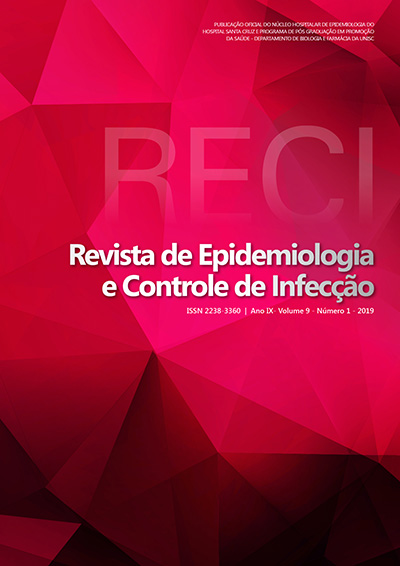Re-use of sharps in insulin therapy and their association with staphylococcus infections
DOI:
https://doi.org/10.17058/reci.v9i1.12243Abstract
Background and Objectives: Multiple dose insulin is one of the treatments used for diabetes. The management of syringes, needles and pens in insulin therapy has been described as a risk factor for the development of infectious processes, causing damage to skin integrity and tissue injuries, facilitating the penetration of opportunistic pathogens. Therefore, the objective of this research was to evaluate the practice of reuse of these instruments in insulin therapy and their relation with the emergence of Staphylococcus sp. contamination in needles and risks of infections. Methods: Semi-structured interviews were carried out with the participants of the study on the aspects of insulin therapy. The research interviewed 15 diabetic individuals, of which 13 (86.7%) were female, and 20 needles were collected and sent to the microbiology laboratory at Faculdade Santa Maria. Results: 53.3% of the participants reported adopting some hygiene care at the application site, 80% reused the needle from one to > 7 days, ranging from 2 to > 15 applications, and 66.7% felt some reaction at the application site. A total of nine reused needles were contaminated withStaphylococcus sp. after culturing, Gram stain, catalase and coagulase tests. Conclusion: According to the results, it can be verified that there is a potential risk of infection by Staphylococcus sp. associated with insulin therapy. Keywords: Self-care. Contamination. Staphylococcus Infections.Downloads
Downloads
Published
How to Cite
Issue
Section
License
The author must state that the paper is original (has not been published previously), not infringing any copyright or other ownership right involving third parties. Once the paper is submitted, the Journal reserves the right to make normative changes, such as spelling and grammar, in order to maintain the language standard, but respecting the author’s style. The published papers become ownership of RECI, considering that all the opinions expressed by the authors are their responsibility. Because we are an open access journal, we allow free use of articles in educational and scientific applications provided the source is cited under the Creative Commons CC-BY license.


